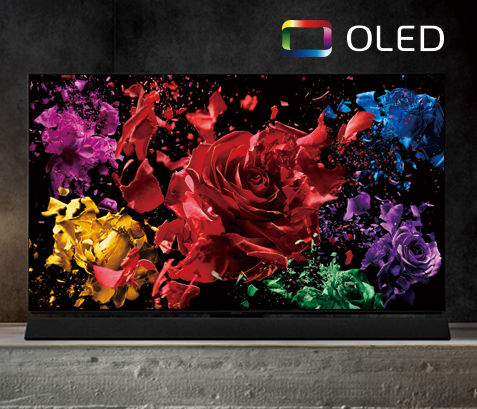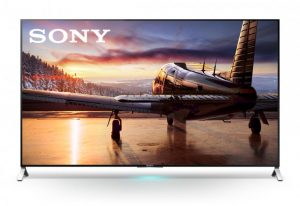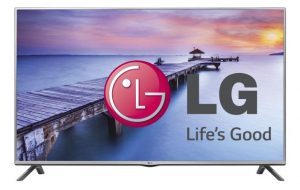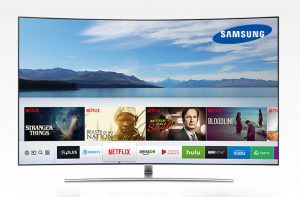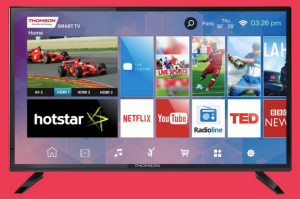Panasonic LED TV in India - Review 2024
Panasonic is one of the largest consumer electronics companies from Japan—a country known for quality. Panasonic offers a decent variety of TVs—a safe option for those who want to try premium features of television at a reasonable price. When compared to new players like Mi, Vu, iFFALCON, Panasonic is much more reliable.
Key Panasonic TV Technologies
OLED TV
Taking cues from its earlier plasma TVs and its rivals LG and Sony, Panasonic has too introduced OLED display in its high-end 4K TV.
OLED is a state-of-the-art technology that stands for Organic Light Emitting Diode. OLED TV uses panels made of organic material that glows when electricity is passed through them. The main difference with organic LED as opposed to the standard one is that in organic LEDs pixel provides its own illumination whereas other TVs have LCD screens and LED for backlighting.
The ability to turn off and on individual pixels empowers OLED TVs to attain superior black levels and wide contrast ratio compared to conventional LCD/LED TVs.
Also, this difference leads to a possibility of reducing the thickness and weight making the new generation TVs look much sleeker. The real advantage of OLED lies in its superior color reproduction and ability to achieve perfect black by powering off the pixel completely. With the help of the expanded color pallet which now supports more than a billion colors, one can get a true theatre-like experience with Panasonic OLED TVs.
One of the biggest disadvantages of OLEDs, however, is the color burn. If you watch a TV channel or content with static elements, such as a logo, this logo is “burned” onto the screen. This happens when the same content with a static element is watched for hundreds of hours. Another disadvantage of OLEDs is that they are sensitive to water. People who live in a region with high humidity and heavy rain must be careful when placing OLED TV, as humidity would reduce the lifespan of OLED displays.
HCX Pro Processor
The latest OLED TVs by Panasonic come with an advanced HCX Pro processor. HCX stands for Hollywood Cinematic eXperince. By incorporating feedback from renowned Hollywood colorist Stefan Sonnenfeld, Panasonic TVs with HCX Pro processor delivers picture quality very close to the filmmaker’s vision. It does so by dynamically analyzing displayed content’s color, saturation, contrast, etc and adjusting them so that picture looks real life like.
HEXA Chroma Drive Pro
At the recently concluded CES trade show, Panasonic announced the world’s first HDR capable 4K TV which supports professional-grade image processing. HEXA Chroma Drive Pro technology employs state-of-art image processing algorithms that use 6 color reproduction instead of 3 used in other contemporary TVs. This is a high-end technology for advanced color palettte from Panasonic and usually available in 4K TVs from Panasonic. This technology compares with Triluminous display from Sony, Quantum Dots from Samsung and OLEDs from LG.
Super Bright Plus IPS LED
Panasonic uses efficient local dimming methods to produce smooth and deep black gradation levels for an immersive viewing experience. This way images won’t appear to be washed out in areas with high and low brightness. Super Bright Plus technology provides more brightness in the pictures by putting efficient LED lights behind a transmissive IPS panel. This makes pictures look crispier even from a tilted viewing angle. IPS panels also add to the durability of Panasonic televisions.
Multiple HDR Support
High Dynamic Range or HDR, as it is best known, simply means more dynamic contrast, better brightness, and a wider color palette that brings your TV viewing experience to a more life-like one. So, the whites are brighter, blacks are darker and other colors more natural. HDR enhances image quality and details that are usually lost in translation in older TVs with standard display models.
Although most of the 4K TVs these days come with HDR but not all HDR is created equal. Most of the TVs especially the budget and mid-range ones come with standard HDR10 format. Some good ones come with HDR10+ (an upgraded version of HDR10). Top-end models come with a proprietary Dolby Vision format. But new OLED models by Panasonic released in 2021 come with the Dolby Vision IQ—arguably the best HDR format available.
Dolby Vision IQ is an upgrade to Dolby Vision HDR format released in 2020. Dolby Vision IQ a proprietary product from Dolby brings entertainment to life by creating dramatic scenes with improved brightness, color, contrast, and dimensionality. With more than 2 lakh frames in a 3-hour film, the picture quality of each frame is optimized through dynamic metadata. Dynamic metadata means TV is able to optimize the content scene by scene dynamically than all at once, as would happen in static metadata processing in ordinary HDR.
The difference between Dolby Vision IQ and Dolby Vision is that Dolby Vision IQ not only used dynamic metadata but also data from TV’s light sensors to dynamically optimize HDR based on ambient lighting conditions inside the room.
Besides Dolby Vision, Panasonic OLED models also support Hybrid Log Gamma (HLG) HDR format. Mainstream HDR formats work post-production i.e., after the complete shooting of the movie or an episode of a show. Live TV shows showing visuals from a live scene do not support feature HDR content. This is the area where BBC from Britain and NHK from Japan have worked together to bring broadcast TV content with the vibrancy of HDR in the form of HLG aka Hybrid Log Gamma. So, with FX730 you would be able to view the live broadcast in HDR provided the broadcaster supports HLG format.
Fine Remaster Engine and Dot Noise Reduction
Though 4K segment is catching up with demand, content in 4K is limited. This implies that we are underusing the potential of 4K TV to run something of the lesser resolution say Full HD or HD. Also, while showing content with lower resolution on 4K TV picture tends to appear grainy and pixelated. To cope with this problem, the Japanese engineers at Panasonic have worked hard to deliver super resolution using its new and efficient engine, which they love to call a 4K Fine Remaster Engine. It has employed example-based resolution technology which easily copes with various sources, which includes Full-HD, SD images, online movies, and others.
Additionally, modern 4K Panasonic TVs come with Dot Noise Reduction technology that minimizes dot noise around the objects on the TV screen. Now, you may wonder what dot noise is? Well, dot noise is a type of noise that occurs when a video from a lower resolution is converted to a higher resolution. Say for example from standard definition (SD) to high definition (HD). This dot noise becomes more prominent on the edges of contrasting colors like yellow and blue. Panasonic TVs coming with Dot Noise Reduction minimizes this dot noise problem.
Dynamic Blade Speaker with Bluetooth Audio Link
Panasonic wants to ensure the efforts it has put in to improve the picture are reciprocated by the acoustics department. That’s why it has used the services of Technics, to make sure Panasonic TVs don’t fall behind its competitors in the sound segment. The result is the development of Dynamic Blade Speaker—a deceitfully slim audio system.
Defying the expectation from its slim-trim size, it gives strong bass thanks to the assembly of 14 speaker units. Speaker units contain eight woofers, four squawkers, and two tweeters. Besides this, there is also a quad passive radiator specialty added to spice up the bass. It gives an audio output of 80W in the TH-65FZ1000D model which is best in class and pleasure for audiophiles.
Latest models like FZ1000D comes with Bluetooth Audio Link function which not only allows connection of TV to external speakers via Bluetooth but it also allows user to play songs from their mobile phones, tablets or other Bluetooth-enabled gizmos onto the fantastic audio setup of Panasonic TV.
My Smart Homescreen 5.0 or Android 9.0
For long, Panasonic pushed its Firefox-based My Home Screen operating system (OS). Lately, it has decided to also release a few models with Android operating system. Let us talk about My Home Screen TV OS first.
Most of the high-end 4K smart TVs from 2020 onward come with My Home Screen 5.0 version. Taking cues from LG’s webOS and Samsung’s Tizen, Panasonic has redesigned its UI (user interface) in its new OS with the concept of a single bottom menu in a bid to avoid obstructing video/image content on screen. So, in the new interface, you don’t have multiple layers to scroll through. When you surf through the apps on this row, you’ll see a pop-up layer of content from the app you have selected. Like for example if you select YouTube, you’ll get a new row wherein Youtube’s recommended videos would be displayed and you can choose to watch if any of those videos piques your interest.
My Home Screen 5.0 also has Multi Window wherein you can play content from two apps simultaneously. This feature is missing in TVs coming with the Android operating system.
Nevertheless, the Android operating system is unbeatable in terms of apps that you can install. And if you have an Android phone, operating Android TV is a breeze. Goes without saying the power of Google Assistant which allows you to browse content at the command of voice.
Besides Sony, Panasonic is only an old and reliable TV brand which offers Android TV.
Backlight Motion Rate in Panasonic TVs
TVs are marketed using different specs and one of the lesser-known parameters is the refresh rate. Panasonic likes to call it Backlight Motion Rate (BMR) for its latest bundles of television. Earlier (2014 or before) it was called Backlight Scan Rate. However, most TV manufacturers buff up these numbers to overstate true refresh rates and Panasonic is no exception. Panasonic TVs like FX730 are marketed with 1500 Hz BMR but the actual refresh rate is 100 Hz. Instead of going by the value of BMR, check for actual the Refresh Rate in the specification sheet of the model.
Panasonic vs the Rest – Concise Comparison & Conclusion
Many of you might still be doubting is Panasonic TV good? Well, Panasonic surely offers a good blend of picture quality with peppy sound at an attractive price range. But OLEDs from LG are better in terms of picture quality. LG is the forerunner of OLED tech and the supplier of OLED panels. And you will need to shell out more money to buy LG TV if OLED is what you want.
Sound is another department where Panasonic fares well, thanks to the hard work of its acoustic arm Technics in designing an audio system of new OLED TVs. Premium Android models on the other hand come with Dolby Atmos support for immersive cinematic audio. With Dolby Atmos, viewers get the feel of sound pouring in from all directions enriching the viewing experience.
Panasonic has been nimble in realizing the need for launching Android TV, especially in the markets like India where Android TV OS is most popular. Panasonic Android models launched in 2020 have met with a good response.
High-end OLED models continue to come with My Home Screen but this TV OS lack versatility of Android OS. But then even LG and Samsung TV have their own OS and they don’t even give an option of Android.
Panasonic was one of the preferred brands, but in the last few years with the entry of new players like TCL, Vu, Mi, etc popularity of Panasonic has taken a hit. That’s the reason Panasonic is striving hard to win back its customer base by offering better TVs with good picture quality and immersive sound.
About the Author:
Hussain Kanchwala is an Electronics Engineer from University of Mumbai. As an Analyst at BijliBachao he keeps a tab on latest technologies in gadgets and appliances, tracks businesses of white goods companies and monitors the consumer behavior. With a background in engineering, penchant for detail, and flair for writing he regularly write reviews about brands and their products. More from this author.

